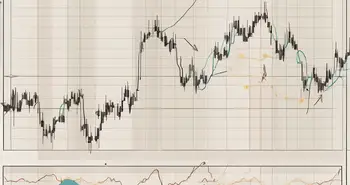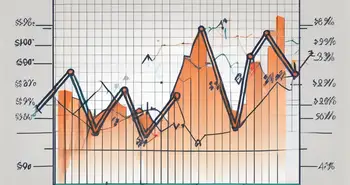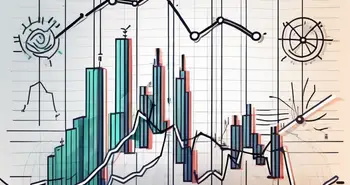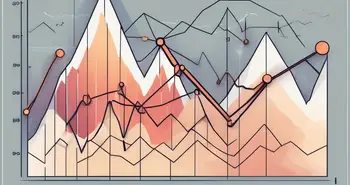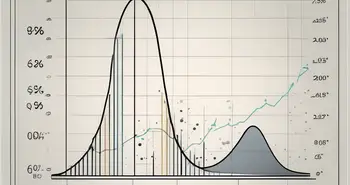Everything You Need to Know About Bollinger Bands Indicators
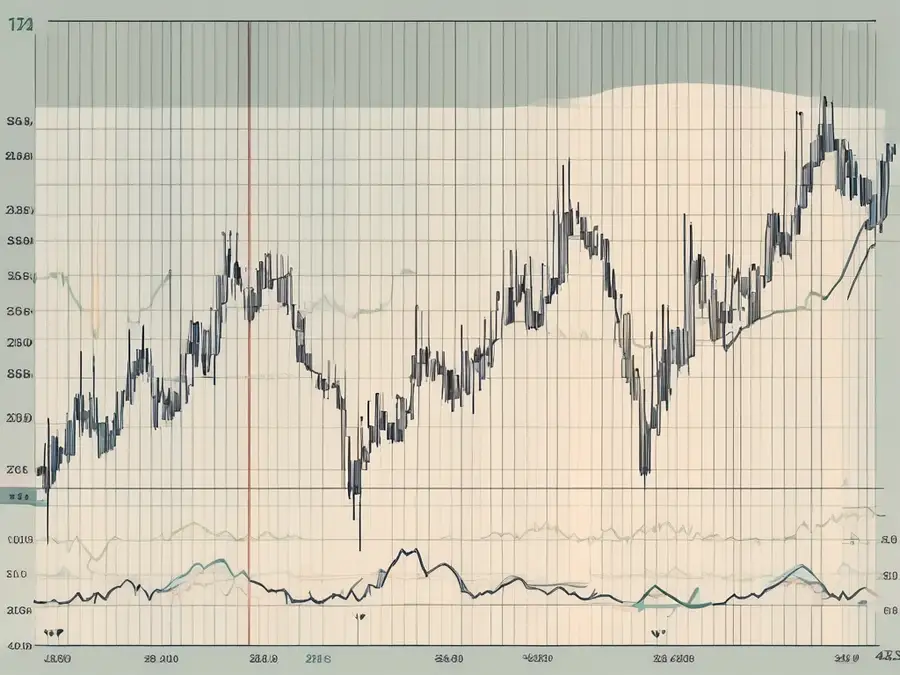
Bollinger Bands are a popular technical analysis tool used by traders to interpret market trends and identify potential buy and sell signals. In this comprehensive guide, I will take you through everything you need to know about Bollinger Bands indicators, including their significance, components, interpretation, and strategies for using them effectively.
Understanding Bollinger Bands Indicators
Let's start by getting a grip on the basics of Bollinger Bands. Created by renowned technical analyst John Bollinger, this indicator consists of three components: the middle band, the upper band, and the lower band. These bands are plotted on a price chart and are based on the standard deviation of price fluctuations over a specific period.
The middle band is typically a simple moving average that gives us an average price trend. The upper and lower bands are calculated as a certain number of standard deviations away from the middle band, representing a range of price volatility.
The Basics of Bollinger Bands
The middle band acts as a reference point for assessing the direction of the trend. When prices are trading near the upper band, it suggests that the market is overbought. Conversely, prices near the lower band indicate an oversold condition. Traders often use Bollinger Bands to identify potential turning points in the market and trade reversals.
The Significance of Bollinger Bands in Trading
Bollinger Bands have gained widespread popularity among traders due to their ability to provide valuable insights into market volatility and potential price reversals. They offer a valuable tool for identifying periods of high and low volatility, helping traders make informed decisions based on market conditions.
Additionally, Bollinger Bands works well with other technical indicators and tools to confirm trading signals. When multiple indicators align with Bollinger Bands, it increases the probability of successful trades.
One important aspect to consider when using Bollinger Bands is the concept of “band width.” Band width is a measure of the distance between the upper and lower bands. It provides an indication of the market's volatility. When the band width is narrow, it suggests that the market is in a period of low volatility, indicating a potential upcoming breakout. On the other hand, a wide band width indicates high volatility, suggesting a period of consolidation or uncertainty in the market.
Another interesting feature of Bollinger Bands is the concept of “Bollinger Squeeze.” This occurs when the band width reaches a relatively low level for an extended period. The squeeze is a sign of potential pent-up energy in the market, indicating that a significant price move may be imminent. Traders often look for a Bollinger Squeeze as a precursor to a breakout or a strong trend reversal.
It's worth noting that Bollinger Bands are not foolproof and should not be used in isolation. Like any technical indicator, they have their limitations and should be used in conjunction with other forms of analysis, such as trendlines, support and resistance levels, and volume indicators, to validate trading decisions.
The Components of Bollinger Bands
Now that we understand the basics, let's dive deeper into each component of Bollinger Bands and how they contribute to the overall interpretation of this indicator.
The Middle Band
The middle band represents the average price trend over a specific period, typically using a simple moving average. It acts as a baseline for determining the prevailing market direction. When prices are above the middle band, it indicates an uptrend, while prices below the middle band suggest a downtrend.
Traders often observe the middle band for potential support or resistance levels. If prices consistently bounce off the middle band, it could indicate a strong trend in the market.
The middle band can also be used in conjunction with other technical indicators to confirm trading signals. For example, if the middle band aligns with a key Fibonacci retracement level, it may provide a stronger indication of potential price reversal points.
The Upper Band
The upper band is calculated by adding a certain number of standard deviations to the middle band. It represents the upper boundary of the price range and helps identify overbought conditions in the market. When prices touch or cross above the upper band, it suggests that the market could be overextended and due for a correction or reversal.
Traders often look for confirmation from other indicators, such as the Relative Strength Index (RSI), when prices reach the upper band. If the RSI also shows overbought conditions, it strengthens the signal that a potential downturn may be imminent.
The Lower Band
Conversely, the lower band is calculated by subtracting a certain number of standard deviations from the middle band. It serves as the lower boundary of the price range and helps identify oversold conditions. When prices touch or breach the lower band, it indicates that selling pressure is high, and a potential price reversal may be on the horizon.
Traders often combine the information from the lower band with volume analysis to gauge the strength of a potential reversal. High selling pressure accompanied by a breach of the lower band may signal a more significant price decline, especially if trading volume is above average.
How to Interpret Bollinger Bands
Interpreting Bollinger Bands involves closely observing the relationship between price and the bands. Two key patterns to watch out for are Bollinger Band squeezes and Bollinger Band walks.
Understanding Bollinger Band Squeezes
A Bollinger Band squeeze occurs when the upper and lower bands come closer together, indicating decreasing volatility in the market. This often precedes a period of increased price volatility and potential breakout. Traders should be on the lookout for a squeeze, as it can signal an impending price move.
Recognizing Bollinger Band Walks
A Bollinger Band walk happens when prices consistently touch or cross either the upper or lower band. This suggests a strong trend in the market. Traders can look for opportunities to enter or exit trades based on the price's interaction with the bands during a walk.
Strategies for Using Bollinger Bands
Bollinger Bands can be a valuable tool for developing trading strategies. Here are two common approaches:
Bollinger Bands and Trend Following
One popular strategy involves using Bollinger Bands to identify trends and trade alongside them. When prices are trending above the middle band, consider taking long positions. Conversely, when prices are trending below the middle band, consider short positions. Combine this with other indicators or candlestick patterns for confirmation.
Bollinger Bands and Reversal Signals
Another strategy involves using Bollinger Bands for spotting potential reversals in the market. When prices touch or cross the upper band, it may indicate an overbought condition and a potential price decline. Similarly, when prices touch or cross the lower band, it may signal an oversold condition and a potential price rebound.
Common Mistakes to Avoid When Using Bollinger Bands
While Bollinger Bands can be a powerful tool in your trading arsenal, it's essential to be aware of common mistakes that traders often make. By avoiding these pitfalls, you can enhance your usage of this indicator.
Overreliance on Bollinger Bands
One mistake many traders make is relying solely on Bollinger Bands for their trading decisions. It's crucial to use Bollinger Bands in conjunction with other indicators and tools, allowing for a more comprehensive analysis of the market conditions.
Misinterpreting Band Breakouts
Another common error is misinterpreting band breakouts. While a price breakout above the upper band or below the lower band can be a signal of potential price movement, it does not guarantee a profitable trade. Look for confirmation from other indicators or patterns before entering trades based on band breakouts.
Personal Advice: When using Bollinger Bands, I always remind myself to stay disciplined and adhere to a well-defined trading strategy. It's easy to get swayed by short-term market fluctuations, but a systematic approach helps me stay focused on the bigger picture. I encourage you to do the same!
FAQ
Q: What are Bollinger Bands indicators?
A: Bollinger Bands indicators are a technical analysis tool that consists of three components: the middle band, upper band, and lower band. They are designed to measure volatility and provide insights into potential price reversals.
Q: How do Bollinger Bands help in trading?
A: Bollinger Bands help traders identify periods of high and low volatility, spot potential price reversals, and confirm trading signals when combined with other indicators. They can be a valuable tool for making informed trading decisions.
Q: What are common mistakes to avoid when using Bollinger Bands?
A: Two common mistakes to avoid are overreliance on Bollinger Bands as the sole indicator for trading decisions and misinterpreting band breakouts without confirmation from other indicators or patterns.
Q: What strategies can be used with Bollinger Bands?
A: Two popular strategies with Bollinger Bands are trend following, where you trade in the direction of the prevailing trend, and reversal signals, where you look for potential price reversals when prices touch or cross the upper or lower bands.
Now that you have the ultimate guide to Bollinger Bands indicators, I encourage you to explore this powerful tool and incorporate it into your trading strategy wisely. Remember, always analyze the market comprehensively, adhere to your trading plan, and stay disciplined for optimal results.
Ready to put your knowledge of Bollinger Bands to the test on a platform that's as innovative as your trading strategy? Look no further than Morpher, the revolutionary trading platform that leverages blockchain technology to offer zero fees, infinite liquidity, and a unique trading experience. Whether you're interested in stocks, cryptocurrencies, or even niche markets like NFTs, Morpher empowers you with fractional investing, short selling, and up to 10x leverage. Sign up today, take control with the Morpher Wallet, and get your free sign-up bonus to start trading the trends you uncover with Bollinger Bands.

Disclaimer: All investments involve risk, and the past performance of a security, industry, sector, market, financial product, trading strategy, or individual’s trading does not guarantee future results or returns. Investors are fully responsible for any investment decisions they make. Such decisions should be based solely on an evaluation of their financial circumstances, investment objectives, risk tolerance, and liquidity needs. This post does not constitute investment advice.

Painless trading for everyone
Hundreds of markets all in one place - Apple, Bitcoin, Gold, Watches, NFTs, Sneakers and so much more.

Painless trading for everyone
Hundreds of markets all in one place - Apple, Bitcoin, Gold, Watches, NFTs, Sneakers and so much more.

